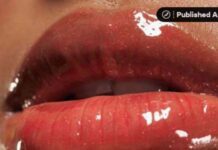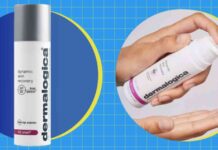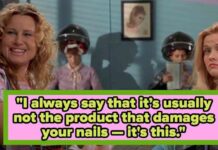Chemical in Scented Products Linked to Early Puberty: New Study
There has been a troubling trend in recent years of children reaching puberty at earlier ages, leaving doctors puzzled as to the cause. However, a new study has shed light on a possible culprit that is present in many products that children and adults come into contact with daily. This study has uncovered the potential dangers of musk ambrette, a chemical that is commonly found in scented products. While musk ambrette may not be a household name, it is likely that you have unknowingly encountered it in various everyday items. So, what exactly is musk ambrette and how does it contribute to the onset of early puberty? Let’s delve into the details of this groundbreaking study.
### Uncovering the Study’s Findings
The study, published in the journal Endocrinology in October 2024, examined over 10,000 compounds to determine their impact on the brain. Researchers discovered that musk ambrette has the ability to bind to a receptor in the brain associated with puberty, leading to the release of a hormone called GnRH. This hormone plays a crucial role in the maturation of sexual organs and the regulation of sex hormones like estrogen, testosterone, and progesterone, all of which are intricately linked to the onset of puberty. While the study did not definitively establish a causal relationship between musk ambrette and early puberty, it did reveal the potential for this chemical to trigger premature puberty in children.
Dr. Natalie Shaw, a senior co-author of the study and a pediatric endocrinologist at the National Institute of Environmental Health Sciences, emphasized the significance of these findings. She highlighted the concerning implications of musk ambrette’s ability to stimulate brain receptors and potentially disrupt the reproductive axis in children. While further research is needed to confirm these findings, the study underscores the importance of investigating the impact of chemicals like musk ambrette on children’s health.
### Understanding Musk Ambrette
Musk ambrette is a synthetic form of musk commonly used as a fragrance in personal care products and as a flavoring agent in certain foods. Despite its widespread use, musk ambrette is banned in cosmetics in the European Union due to its potential health risks. This chemical has been detected in maternal blood, umbilical cord blood, and breast milk, raising concerns about its effects on children’s development. Dr. Shaw emphasized the need for increased scrutiny of musk ambrette and similar compounds, given their presence in household and personal care products.
While the exact mechanisms by which musk ambrette influences puberty are still being investigated, its ability to interact with brain receptors and hormone pathways poses a potential threat to children’s health. Dr. Shaw cautioned that more research is necessary to fully understand the impact of musk ambrette on early puberty. However, the findings of the study suggest that chemicals in our environment, including musk ambrette, may play a role in the shifting trends of early puberty in children.
### Examining the Causes of Early Puberty
The decreasing age of puberty onset has been a topic of concern among researchers, with studies showing a consistent trend towards earlier puberty in recent decades. Factors such as obesity, dietary changes, and exposure to substances like phthalates have been proposed as potential contributors to early puberty. However, the exact reasons behind this shift remain unclear, prompting further investigation into environmental influences on children’s development.
Research indicates that the average age at which girls enter puberty has decreased steadily over the years, raising questions about the role of external factors in this phenomenon. Dr. Shaw emphasized the need to explore the impact of chemicals in our environment on children’s health, as emerging data points to a potential link between environmental exposures and early puberty. While definitive conclusions have yet to be drawn, ongoing research aims to unravel the complex interplay between environmental factors and childhood development.
### Identifying Musk Ambrette in Products
Musk ambrette can be found in a wide range of products, including soaps, cleaning agents, shampoos, deodorants, body washes, perfumes, and air fresheners. This chemical is also used as a flavoring in certain foods and spices, further increasing the likelihood of exposure to musk ambrette in daily life. Dr. Shaw cautioned that musk ambrette, along with related compounds like musk xylene and musk ketone, may pose risks to children’s health due to their presence in synthetic fragrances commonly used in household and personal care products.
Despite concerns about the toxicity of musk ambrette, this chemical continues to be available on the market and is not subject to stringent regulatory measures. Dr. Shaw advised parents to exercise caution when selecting personal care products for their children, opting for federally regulated items to minimize exposure to potentially harmful chemicals. Given the prevalence of musk ambrette in various consumer goods, consumers are urged to read product labels carefully and avoid products containing this compound whenever possible.
### Taking Precautions for Children’s Health
The potential risks associated with musk ambrette and similar chemicals underscore the need for greater awareness and regulatory oversight in the personal care industry. Dr. Shaw emphasized the importance of conducting further research to evaluate the impact of these compounds on children’s health and development. While conclusive evidence linking musk ambrette to early puberty is still lacking, the study’s findings warrant closer scrutiny of synthetic fragrances and their potential effects on reproductive health.
In light of these findings, parents are encouraged to prioritize the safety of their children by choosing products that adhere to strict regulatory standards and avoid ingredients of concern. Dr. Shaw reiterated the need for ongoing research to assess the long-term health effects of chemicals like musk ambrette on children’s development. By staying informed and making informed choices about personal care products, parents can help protect their children from potential risks associated with exposure to harmful chemicals.
In conclusion, the study’s findings shed light on the complex relationship between environmental exposures and childhood development, highlighting the need for continued research and regulatory action to safeguard children’s health. Dr. Shaw’s insights underscore the importance of vigilance in selecting products for children and advocating for greater transparency in the personal care industry. As we strive to understand the factors contributing to early puberty and protect children’s well-being, ongoing research and public awareness efforts are essential in addressing the challenges posed by harmful chemicals in our environment.

















